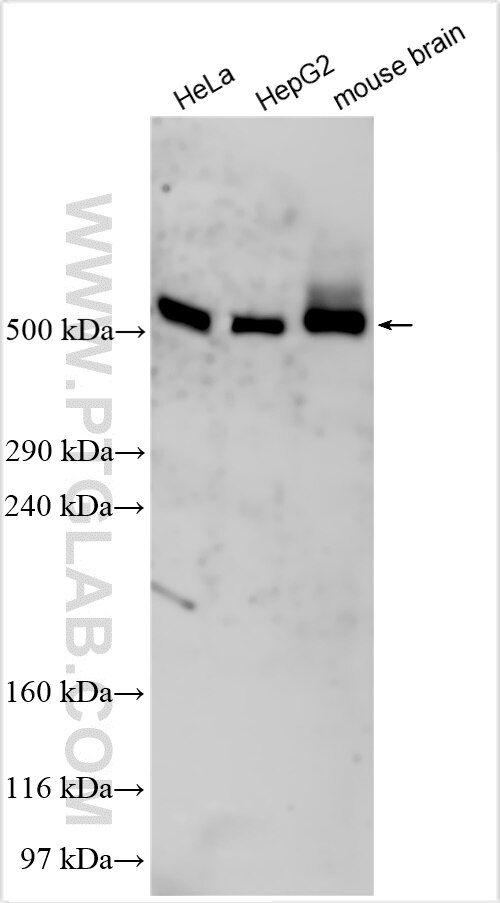Tested Applications
| Positive WB detected in | HeLa cells, HepG2 cells, mouse brain tissue |
Recommended dilution
| Application | Dilution |
|---|---|
| Western Blot (WB) | WB : 1:500-1:1000 |
| It is recommended that this reagent should be titrated in each testing system to obtain optimal results. | |
| Sample-dependent, Check data in validation data gallery. | |
Product Information
20609-1-AP targets C12orf51 in WB, ELISA applications and shows reactivity with human, mouse samples.
| Tested Reactivity | human, mouse |
| Host / Isotype | Rabbit / IgG |
| Class | Polyclonal |
| Type | Antibody |
| Immunogen | C12orf51 fusion protein Ag14614 Predict reactive species |
| Full Name | chromosome 12 open reading frame 51 |
| Calculated Molecular Weight | 3996 aa, 439 kDa |
| Observed Molecular Weight | 500 kDa |
| GenBank Accession Number | BC006270 |
| Gene Symbol | C12orf51 |
| Gene ID (NCBI) | 283450 |
| RRID | AB_3669337 |
| Conjugate | Unconjugated |
| Form | Liquid |
| Purification Method | Antigen affinity purification |
| Storage Buffer | PBS with 0.02% sodium azide and 50% glycerol, pH 7.3. |
| Storage Conditions | Store at -20°C. Stable for one year after shipment. Aliquoting is unnecessary for -20oC storage. 20ul sizes contain 0.1% BSA. |
Background Information
The HECT domain E3 ubiquitin protein ligase 4 (HECTD4), is also known as C12orf51. It may be involved in protein modification or ubiquitination (PMID: 26891264). In addition, genetic polymorphisms of C12orf51 are related to alcohol consumption and type 2 diabetes (T2D) (PMID: 38523829).
Protocols
| Product Specific Protocols | |
|---|---|
| WB protocol for C12orf51 antibody 20609-1-AP | Download protocol |
| Standard Protocols | |
|---|---|
| Click here to view our Standard Protocols |



